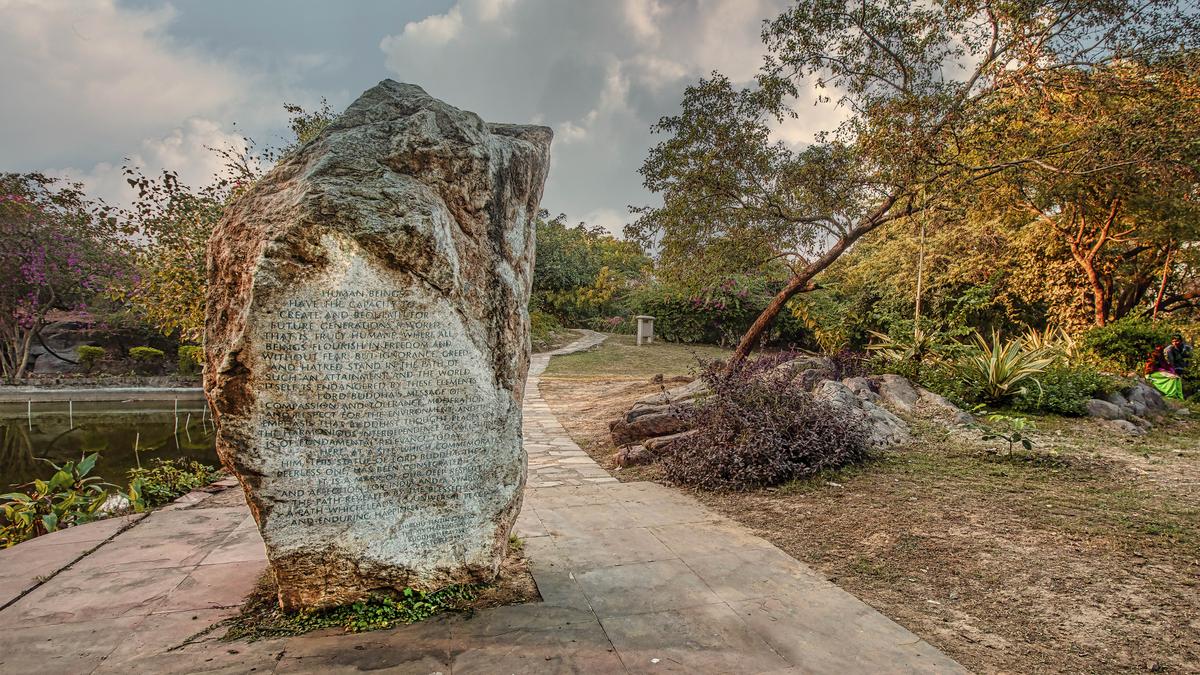
‘Gardens of Delhi’ gives us a glimpse into the hidden green treasures of the capital
The Hindu
Discover the hidden secrets of Delhi's gardens in 'Gardens of Delhi' book by Swapna and Madhulika Liddle.
Delhi may be known for its sweltering summers and chilly winters but the gardens in the capital offer a quick escape, holding close well-kept secrets. In a new book, Gardens of Delhi (Niyogi Books), authors and siblings Swapna Liddle and Madhulika Liddle join photographer Prabhas Roy in uncovering the secrets of some of these vast green spaces. According to the Delhi Parks and Gardens Society, the city has more than 18,000 public parks and gardens. The Liddles, who have visited several of these while growing up in Delhi, say the process of writing this book led to many discoveries. “I came across a ‘Tree of Owls’ in Nehru Park, a park I have lived next to for years. Similarly, I discovered one of the tallest trees in Lodhi Garden, also known as the Buddha Coconut,”says amateur naturalist Madhulika. The sprawling ‘Tree of Owls’ or the maharukh tree (Ailanthus excelsa) is one of the most photographed trees at the park, though not much is known about the owls’ connection. Meanwhile, the Buddha Coconut, with its tall trunk, gets its name from its coconut-like fruit. The book takes us from Delhi’s oldest garden, dating back to the 14th-century Tughlaq dynasty, to its most modern parks.
Swapna, the historian and heritage conservator known for her books on Shahjahanabad, Chandni Chowk and others, reminds us that Delhi was planned as a city of gardens, despite its dry natural habitat. “The authorities made conscious efforts to add gardens into the nooks and crannies as they were building the capital,”she says about what is considerably one of the greener capitals of the world with almost 23% green cover.
“Less than 40 years ago, people knew that there was a need for greenery but more recently, there has been a greed for more and more development… resulting in an almost unlivable city,” adds Swapna, expanding on why they were keen on writing this book. While Delhi’s authorities have worked hard to preserve some of the gardens in the capital, Madhulika points out that they also brought in foreign species while building these green spaces. “The authorities are attempting to replace those foreign species now with plants that are more local,” Madhulika says, explaining how history and horticulture intersect in these gardens.
While Mughal landmarks such as Safdarjung Tomb and Humayun’s Tomb are very often spoken about, their gardens are not. And it is often forgotten that many of these gardens were built by women “especially Mughal women”, according to Swapna. Jahanara Bagh is one of them. Built by the daughter of Mughal emperor Shah Jahan, it has ceased to exist as a garden in the bustling market of Chandni Chowk. What was once home to fountains and red stone pillars was renamed Queen’s Garden in 1857, and what is left of the grounds is now called Gandhi Park.
Many other gardens built by Mughal women have been at the centre of redevelopment, in busy corners of Delhi. There have been efforts by the Municipal Corporation of Delhi to preserve the Roshanara Bagh. Situated near the North Campus of Delhi University, it is the resting place of Roshanara Begum, Shah Jahan’s third daughter. Built near a canal, which has since fallen into disrepair, one of the rather unusual species seen here is the Bistendu tree. Despite being native to Delhi, it is rarely found in its public gardens. Another garden with a story among the 14 featured is the Qudsia Bagh. Once the palace garden of a Mughal queen, it originally stood beside a stream which is now a polluted drain. The Bagh served the people of Delhi through floods and revolts, becoming a refuge to villagers affected in the floods of 1852. It was also where the British kept their troops and turned into a battleground between Indians and Britishers in 1857.
The Mehrauli Archaeological Park, recently restored by the Delhi Development Authority with manicured lawns and walking paths, even a small cafe, is a treasure trove of monuments. It holds the ruins of the walls of Lal Kot built by the Tomar Dynasty as part of the first properly recorded city of Delhi. Overlooking the Qutub Minar, the 200-acre park has hundreds of architectural relics from the ruling periods of Khilji dynasty, Tughlaq dynasty, Lodhi dynasty of Delhi Sultanate, Mughal Empire, and the British Raj.
satvika.mahajan@thehindu.co.in











